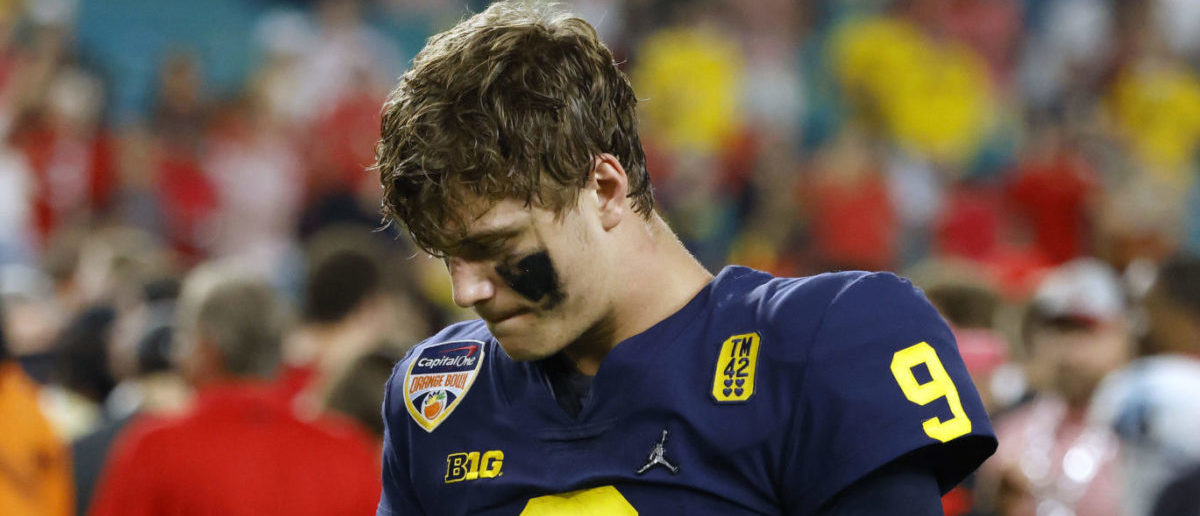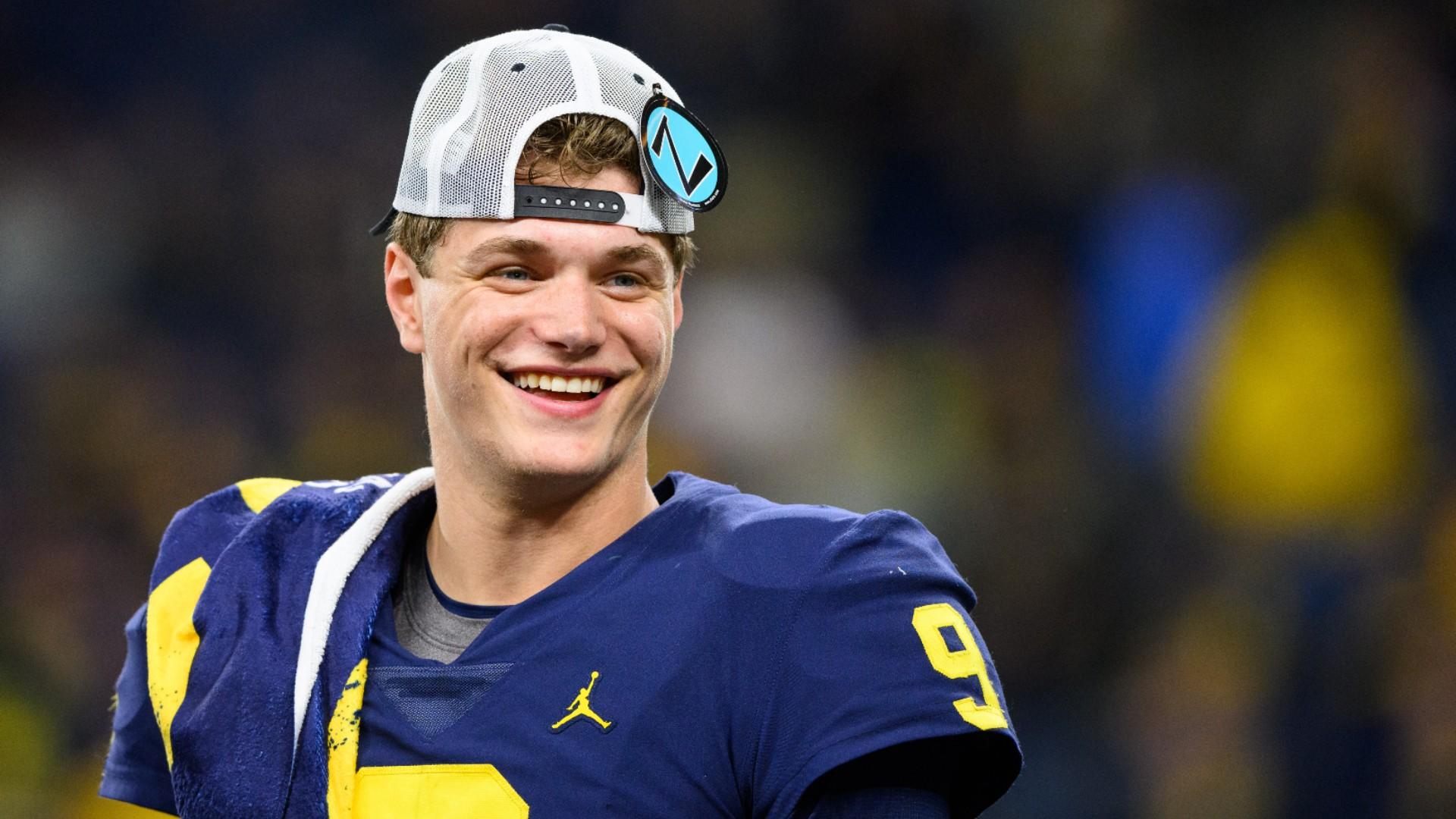JJ McCarthy’s Knee Injury and Surgery

JJ McCarthy, the talented quarterback for the University of Michigan Wolverines, suffered a significant knee injury during the 2023 season, requiring surgery. The injury, a torn ACL, impacted his ability to perform at his best and raised concerns about his future on the field. This article delves into the details of McCarthy’s injury, the surgical procedure, and the expected recovery process.
Nature of the Injury
McCarthy’s knee injury involved a tear of the anterior cruciate ligament (ACL), a major ligament in the knee that provides stability and prevents excessive forward movement of the tibia (shinbone) relative to the femur (thighbone). This type of injury is common in athletes, particularly those involved in high-impact sports like football. The ACL tear can occur due to a sudden twisting motion or a direct blow to the knee, often resulting in immediate pain, swelling, and instability.
Surgical Procedure
The surgical procedure to repair a torn ACL typically involves reconstructing the ligament using a graft, which can be taken from another part of the patient’s body or from a donor. The graft is then attached to the femur and tibia, creating a new ACL. The specific technique used may vary depending on the surgeon’s preference and the individual patient’s anatomy. The goals of the surgery are to restore stability to the knee joint, reduce pain, and allow for a return to athletic activity.
Recovery Timeline and Rehabilitation
The recovery process following ACL reconstruction surgery can be lengthy and challenging, typically taking several months. The initial phase focuses on reducing pain and swelling, followed by regaining range of motion and strengthening the muscles surrounding the knee. As the healing progresses, the rehabilitation program will gradually increase in intensity, incorporating activities such as walking, jogging, and agility drills. The specific timeline for recovery can vary depending on factors such as the individual’s age, fitness level, and the complexity of the surgery.
Long-Term Effects on Athletic Career, Jj mccarthy knee surgery
While an ACL tear and subsequent surgery can be a significant setback for an athlete, with proper rehabilitation and a commitment to recovery, many athletes are able to return to their sport at a high level. However, there is a risk of long-term effects, such as decreased stability, increased risk of future injuries, and limitations in athletic performance. The long-term effects will depend on the individual’s recovery process, the quality of the surgical repair, and their ability to regain strength and mobility.
Impact on Michigan Football: Jj Mccarthy Knee Surgery

JJ McCarthy’s knee injury, while unfortunate, significantly impacted the Michigan football team during his recovery period. His absence left a void in the offense, forcing the team to adapt and rely on other players. To fully understand the impact, we need to examine the team’s performance before and after the injury, the role of backup quarterbacks, and the team’s overall strategies.
Performance Before and After the Injury
McCarthy’s performance before the injury showcased his potential as a dynamic quarterback. He was a key contributor to Michigan’s success, displaying impressive accuracy, mobility, and playmaking abilities. However, after the injury, his absence was evident. The team’s offensive production, particularly in the passing game, noticeably declined. This forced Michigan to rely heavily on its running game, which was a significant change in their offensive approach.
Role of Backup Quarterbacks
During McCarthy’s absence, backup quarterbacks stepped up to fill the void. These players had to adapt quickly to the pressure of leading the offense. While they may not have possessed the same level of experience or skillset as McCarthy, their contributions were crucial to maintaining the team’s competitiveness. Their performance, while commendable, highlighted the importance of McCarthy’s presence and the challenges of replacing a starting quarterback.
Team’s Overall Performance and Strategies
The team’s overall performance during McCarthy’s absence was a testament to their resilience and adaptability. They had to adjust their strategies to compensate for the loss of their starting quarterback. This included relying more heavily on the running game, emphasizing a more conservative offensive approach, and relying on the defense to carry the team. Despite the challenges, Michigan continued to compete at a high level, demonstrating the depth and talent within the program.
Knee Injuries in Athletes

Knee injuries are common in athletes, particularly those involved in high-impact sports like football, basketball, and soccer. These injuries can range from minor sprains to severe ligament tears and can significantly impact an athlete’s performance and career.
Common Knee Injuries in Athletes
Understanding the common types of knee injuries is crucial for athletes and medical professionals. These injuries can result from various factors, including overuse, sudden impact, or improper technique.
- Anterior Cruciate Ligament (ACL) Tear: This ligament connects the thighbone (femur) to the shinbone (tibia) and helps stabilize the knee joint. An ACL tear often occurs due to a sudden twisting or pivoting motion, commonly seen in sports like basketball, football, and soccer.
- Posterior Cruciate Ligament (PCL) Tear: The PCL, located at the back of the knee, also connects the femur to the tibia. PCL tears usually occur from a direct blow to the front of the knee or when the knee is hyperextended.
- Medial Collateral Ligament (MCL) Tear: The MCL runs along the inside of the knee, connecting the femur to the tibia. MCL tears are often caused by a direct blow to the outside of the knee.
- Lateral Collateral Ligament (LCL) Tear: The LCL is located on the outside of the knee, connecting the femur to the fibula. LCL tears are less common than MCL tears and usually occur due to a direct blow to the inside of the knee.
- Meniscus Tear: The meniscus is a C-shaped piece of cartilage that acts as a shock absorber between the femur and tibia. Meniscus tears can occur from twisting or pivoting motions or from a direct blow to the knee.
- Patellar Tendinitis: This condition involves inflammation of the patellar tendon, which connects the kneecap (patella) to the shinbone. It often occurs due to overuse or repetitive stress.
Challenges of Knee Injuries for Quarterbacks
Knee injuries pose unique challenges for quarterbacks in American football. Their role as the primary playmaker and the leader of the offense requires a high level of mobility, agility, and throwing accuracy.
- Mobility and Agility: Quarterbacks need to be able to move around the pocket, avoid sacks, and make quick decisions. Knee injuries can significantly impact their ability to move effectively, hindering their performance and increasing their risk of further injury.
- Throwing Accuracy: Knee injuries can affect a quarterback’s balance and stability, impacting their throwing mechanics and accuracy. Even a minor injury can affect their ability to throw with power and precision.
- Mental Impact: Knee injuries can also take a toll on a quarterback’s mental state. The fear of reinjury and the uncertainty surrounding their recovery can affect their confidence and decision-making on the field.
Recovery Timelines and Long-Term Outcomes
The recovery timeline and long-term outcomes of knee injuries vary depending on the severity of the injury, the type of surgical procedure (if any), and the individual’s rehabilitation program.
- ACL Tears: ACL tears typically require surgery, followed by a rigorous rehabilitation program. Recovery can take 6-9 months, and athletes often need to undergo physical therapy to regain strength, stability, and mobility.
- PCL Tears: PCL tears can be treated conservatively with bracing and physical therapy. However, severe PCL tears may require surgery. Recovery timelines vary depending on the severity of the tear and the treatment approach.
- MCL Tears: MCL tears are often treated conservatively with rest, ice, compression, and elevation (RICE). Recovery typically takes 4-6 weeks, but severe tears may require surgery.
- LCL Tears: LCL tears are often treated conservatively with RICE and bracing. Recovery can take 6-8 weeks, but surgery may be necessary in some cases.
- Meniscus Tears: Treatment for meniscus tears depends on the severity and location of the tear. Some tears can be treated conservatively with RICE and physical therapy, while others may require surgery. Recovery timelines vary depending on the treatment approach.
Examples of Athletes with Knee Injuries
Many athletes have experienced knee injuries and successfully returned to their sport after rehabilitation.
- Tom Brady: The legendary quarterback suffered a torn ACL in 2008, but he returned to play at a high level and went on to win multiple Super Bowls.
- Derrick Rose: The former NBA MVP suffered multiple knee injuries, including an ACL tear, which significantly impacted his career. However, he was able to return to the league and even won the NBA MVP award again in 2011.
- Tiger Woods: The legendary golfer has had several knee surgeries throughout his career, including ACL reconstruction. Despite these challenges, he has returned to the top of the game and won numerous major championships.
Jj mccarthy knee surgery – JJ McCarthy’s knee surgery is a tough break for the Michigan Wolverines, but it’s a reminder of the fragility of even the most talented athletes. It’s a stark contrast to the remarkable rise of justin jefferson , who has defied expectations and become a dominant force in the NFL.
While McCarthy’s recovery will be a long road, he can draw inspiration from the resilience of players like Jefferson, proving that setbacks can be overcome with dedication and hard work.
JJ McCarthy’s knee surgery is a reminder of the fragility of athletic careers, a fact that was starkly illustrated by the recent Justin Jefferson injury. While McCarthy’s surgery is expected to be a relatively quick recovery, the severity of Jefferson’s injury highlights the importance of proper conditioning and preventative measures in avoiding long-term setbacks.
Hopefully, McCarthy’s recovery will be smooth and he’ll be back on the field soon.
